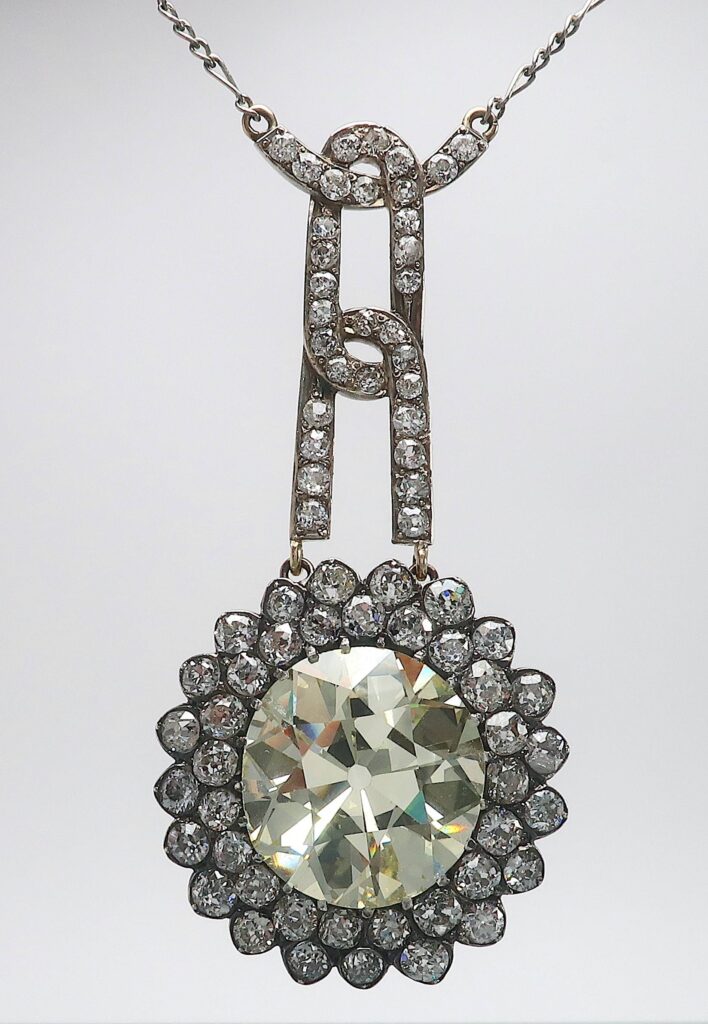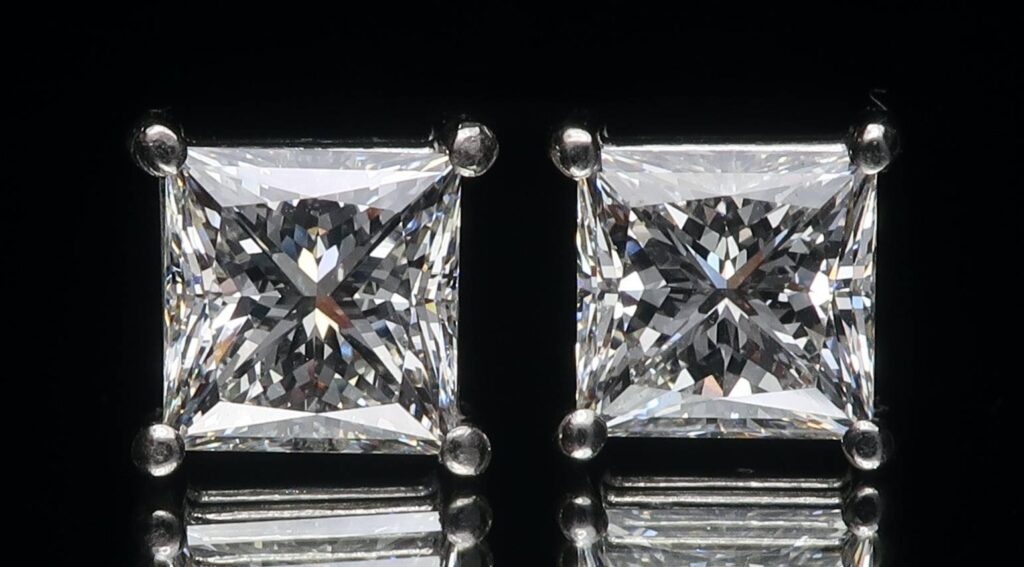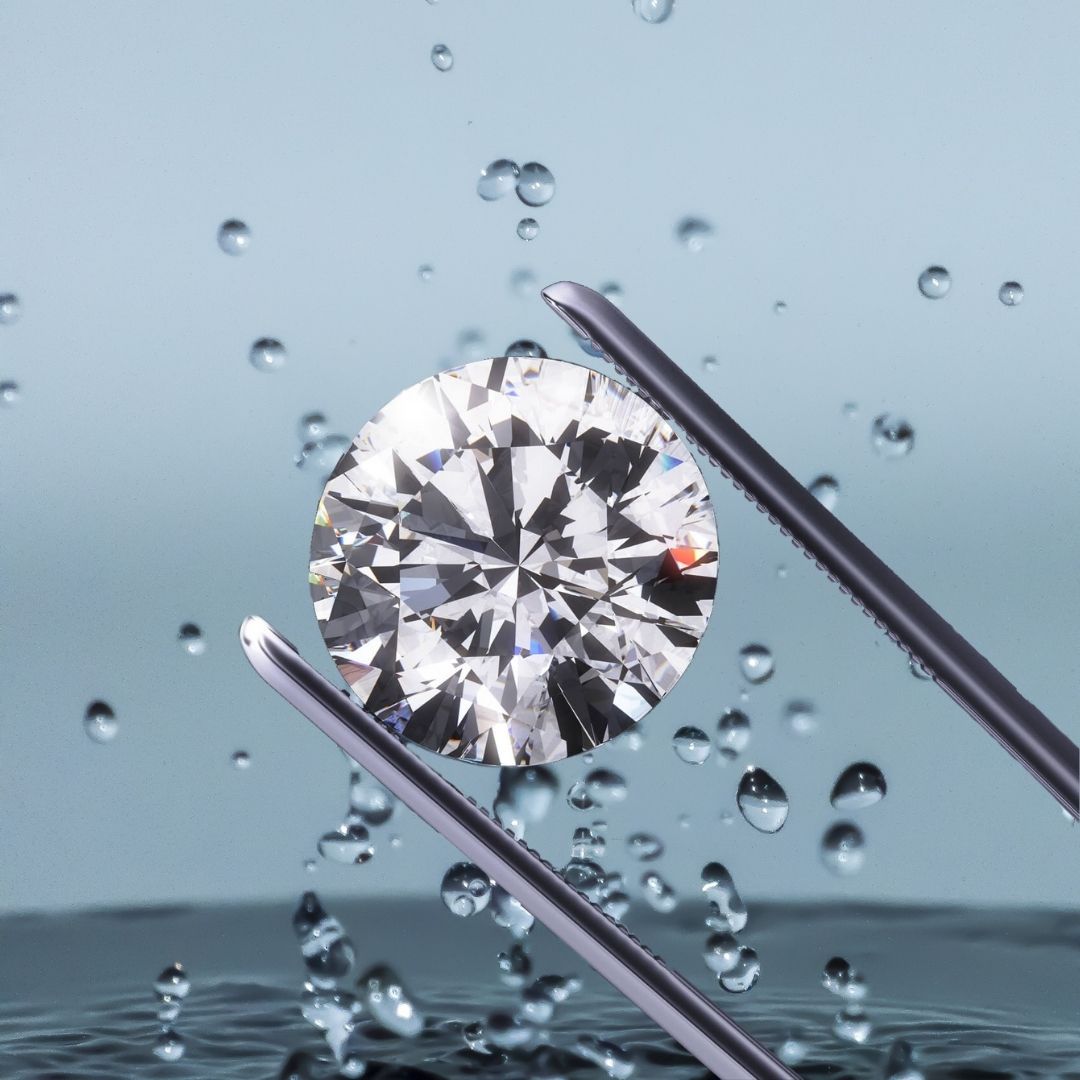A diamond’s story: Why history still matters in today’s “lab” market

In 1947, Frances Gerety, working for DeBeers’ advertising agency N.W. Ayer coined the expression, “A diamond is forever,” cementing the world’s view of diamonds. The quintessential gem in the world of personal adornment, diamonds have long been the first choice when consumers think of jewellery. Yet, over the last five years, the conversation around diamonds has become more complicated as consumers increasingly add a prefix when referring to them: “lab.”
There’s so much anxiety and chatter surrounding this “forever” gemstone among jewellers these days, too. Well, not actual diamonds, but lab diamonds—or “L” diamonds, as someone said to me the other day—have become a source of preoccupation. I know diamond dealers who keep their safes pretty much empty these days, picking up gems as needed rather than holding inventory. It’s hard to sell things if you don’t have them, but watching prices drop is a pretty decent incentive to minimize stock holdings.
In the auction world, we have felt some apprehension about diamonds, but we have been pleasantly surprised to see strong results for them. There are similar results in auctions all around the world; very few diamond—actual diamond—pieces remain unsold. While lab-grown diamonds don’t have any resale value, natural diamonds retain value.

Old diamonds, a window into the past
People who buy diamonds love the stories, mystery, history, romance, and memories associated with the gem.
Forever is a long time, and a diamond has stories to tell. We have found that, in the world of estate and vintage jewels, buyers love the idea of an older diamond. Old mine-cut diamonds, introduced in the 18th century after diamonds were found in Brazil, have a square-ish outline, like a cushion shape, but they have a high crown and an open, large culet facet. They are very popular in the auction and vintage market.
Old mine-cut diamonds were cut from the 1740s to about the 1860s. At the time, they were called “brilliants.” In a Victorian novel, a necklace of “brilliants” is an old family jewel, treasured for generations. It is likely lost when a carriage accident occurs, possibly when it runs over a postilion or something. Sometime later, the necklace appears in the window of a one-eyed pawnbroker, or some such, much to the consternation of the domestic staff—who are still tending to the injured postilion.
Old European-cut diamonds arrived in the later 19th century, their round outline and smaller culet replacing the features of the old mine-cut. Their symmetry gives them a brilliance that distinguishes them from old mine-cut diamonds. At the time, old European-cut diamonds were also called “brilliants.”

Why history still matters in today’s “L” market
Old mine-cut and old European-cut diamonds have a long history, which is attractive to modern buyers for many reasons. Some of the reasons are very clear, and some are more obscure.
The buyer of an old mine-cut, or old European-cut, diamond usually doesn’t know the specific history of the gem. They know it is at least antique (defined conventionally as an age of a century or more). An old mine-cut diamond may be as much as a quarter of a millennium old (imagine!), and even an old European-cut diamond will likely be a century or more in age. While not knowing the exact history of a diamond, knowing its approximate age is something that really attracts buyers.

Family history is generally private, so buyers of old diamonds (or jewels) are usually not told the names of former owners. Still, when I meet people thinking of offering diamonds at auction, they are fascinated when I observe their diamond is a particular style of cut and likely from a specific time period. They often say something like, “Oh, that makes sense. I think it was my great-great grandmother’s engagement ring, and she was born in…” Although the new owner will never know who the seller’s great-great-grandmother was, knowing that the diamond once belonged to someone’s ancestor adds to the gem’s background and story.
Another factor that captivates buyers of old diamonds is that their new gem is unlike everyone else’s. The distinct geometry and the behaviour of light entering and dispersing from an old cut diamond are very different from those of modern cut diamonds. People love the fact that their old cut diamond behaves differently, and, along with its age, it has its own distinct visual personality.
Breathing new life into antique jewellery
People often find themselves with old diamonds they want to keep because they have a personal resonance. I inherited my grandmother’s brooch, my mother’s ring, and my uncle’s pinky ring. The people were all special to me, and I wanted to hold on to the jewels, but I’d never wear them. They’re not my style, or they are just awful jewels.
A jeweller can provide a valuable service by creating a jewel that matches the current client’s personal style. The dreadful jewels taking up space in a jewellery box can be melted and credited towards the new jewel. This way, the client can convert a family tree into a new treasured adornment.

I am not counselling you to break up marvellous and important jewels—it is best to discourage breaking up important jewels. Still, many jewels will malinger in the back of a drawer until a new generation who has never seen them and doesn’t even know who originally owned them will take them to be melted and remade.
People will pass on and remember the stories of jewels that they see and wear. I have jewels from my family, but I know I never saw them on anyone, so I never heard anyone telling me to value their history. My daughter wears a tiny diamond ring that came down through my family, but neither of my parents is around anymore, and I am not even sure which side of the family the ring came from. However, the ring is set with one old mine-cut, one old European-cut, and one transition-cut diamond. The diamonds are about five points each and likely represent three generations ending around 1930. It is special because, while the history is vague and its economic value is small, the emotional value and depth of history are huge.
The future of diamonds, lab-grown vs. natural
In the world of auctions, our experience has shown that natural diamonds are retaining value among jewellery buyers. Prices had been dropping, but based on recent auctions, it seems there is some stabilization in price. The appetite for old-cut diamonds is strong.
While lab-grown diamonds are on everyone’s mind right now, the “L” has not replaced the nature of history, the mystery, the stories, and the romance buried in natural old diamonds. We are all captivated by the treasure buried deep in the earth or deep in grandmother’s diamond ring.
Duncan Parker, FGA, FCGmA, CAP-CJA, is vice president of Dupuis Fine Jewellery Auctioneers, based in Toronto. He has worked as a gemmologist and jewellery specialist, appraiser, and consultant for nearly 35 years. Parker is an educator and lecturer on jewellery subjects and has been a speaker at international conferences with a focus on jewellery history. He has served as president of the Canadian Gemmological Association (CGA) and Jewellers Vigilance Canada (JVC). Parker can be reached at duncan.parker@dupuis.ca.


